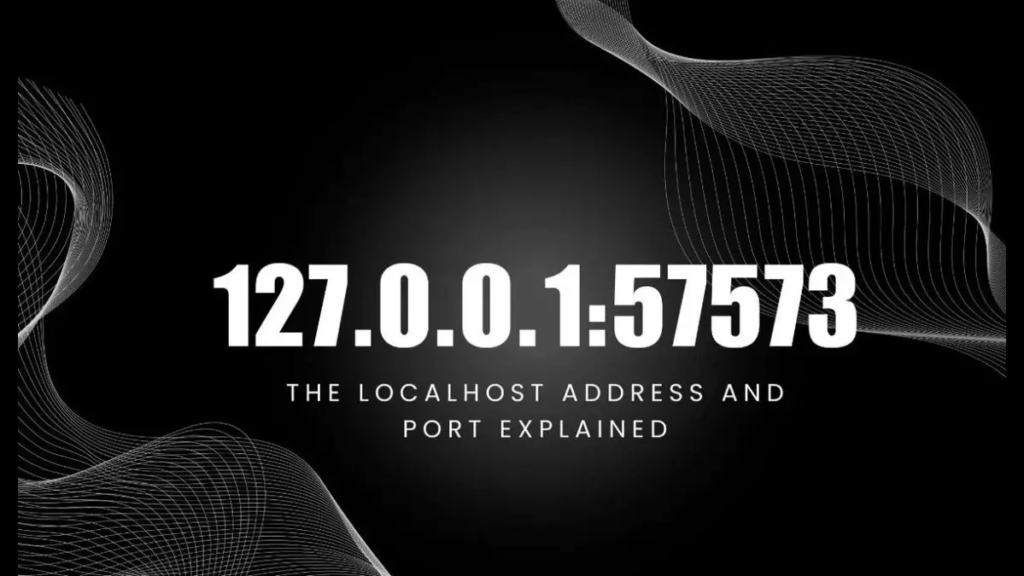In networking, the time period 127.0.0.1:57573 regularly draws interest. It indicates a specific deal with-port combination used for localhost communique, which is essential to web development, testing, and various server-customer communications. Let’s dive deep into what 127.0.0.1:57573 method, the way it works, and its importance, mainly for developers.
What is 127.Zero.0.1?
The IP cope with 127.0.0.1 is commonly known as localhost or the loopback cope with. It’s a unique-cause IP deal with reserved to be used on a machine for checking out and communication within itself. When you kind “localhost” in an internet browser or discuss with 127.0.0.1 on your community configuration, you’re instructing the computer to talk with itself in place of reaching out to any outside servers.
The Importance of Localhost
Localhost is a key issue in networking, in particular in the course of the development system. When builders work on applications, websites, or server configurations, they generally want a reliable manner to check everything earlier than freeing it to the world. By the use of localhost, they can make sure their server and customer code is functioning properly without affecting live statistics or structures.

What Does 57573 Represent?
The number 57573 is a port quantity. In networking, ports allow computers to control a couple of connections to special packages or services simultaneously. The aggregate of an IP cope with (like 127.0.0.1) and a port range (together with 57573) forms what’s called a socket. This enables one-of-a-kind offerings on the same gadget to listen and respond to requests independently, making sure clean and remoted communications.
Port Numbers and Their Use
Port numbers can range from 0 to 65535, with certain levels being reserved for specific protocols or offerings. For instance, port eighty is normally used for HTTP site visitors, while port 443 is used for HTTPS. Ports like 57573 are dynamically assigned, regularly for temporary functions along with trying out a development server. When you get admission to 127.0.0.1:57573, you’re mainly communicating with a service running on that port within your local device.
Common Use Cases for 127.0.0.1:57573
Developers use 127.0.0.1:57573 for the duration of the improvement and testing levels. For example, in case you’re walking a neighborhood server for testing an internet software or backend API, it might default to the usage of this address-port aggregate. Tools like Node.Js, Flask, or maybe database control structures can bind to 127.Zero.0.1 and a random port, such as 57573, to allow for stable, nearby trying out before deploying to manufacturing environments.
Security and Localhost
By design, 127.0.Zero.1 is offered best from the nearby machine. This means no external device or computer can get entry to offerings strolling on 127.Zero.0.1. This isolation presents an inherent layer of safety for packages within the testing or development ranges. However, developers have to still put into effect extra safety features for production environments considering that exposing services outside localhost can introduce vulnerabilities.

Troubleshooting Localhost Issues
Sometimes, when developers try to access a carrier through 127.0.0.1:57573, they may stumble upon problems consisting of “connection refused” or “unable to connect.” These troubles can stand up because of several elements, together with the provider no longer walking on the required port, firewall policies blockading access, or wrong configurations inside the server setup. Debugging these troubles generally includes checking server logs, verifying port usage, and making sure no conflicts exist between services.
Real-global Applications of Localhost
Many applications, from database control equipment to APIs, use localhost for their initial setup. Developers regularly use 127.0.0.1:57573 for non-public projects, demos, or debugging sessions. For instance, a database like MySQL can be walking on port 3306 regionally. Even as some other carrier makes use of 57573. This ability to manipulate offerings independently on localhost enables efficient improvement cycles.
The Relationship Between Localhost and Remote Servers
While 127.Zero.0.1 is precisely a neighborhood address, many tools permit builders to “tunnel” visitors from external systems to localhost. This can be useful while debugging webhooks or offerings. That require external get entry to but nonetheless need to be tested locally. Tools like ngrok enable builders to expose localhost services over the net temporarily. Making them handy thru public URLs even as nevertheless protecting the center service.
Conclusion
The aggregate 127.0.0.1:57573 may also appear to be a random set of numbers to those unfamiliar with networking, however for builders. It is a gateway to powerful testing, improvement, and server control. Understanding how localhost works, and how port numbers facilitate service isolation.
FAQs
What is 127.0.0.1:57573?
127.0.0.1 is the localhost address, even as 57573 represents a port number. Together, they permit nearby communication inside a system.
Why do developers use localhost?
Localhost offers a secure environment for testing and growing packages with out impacting live systems.
Can external structures access services running on 127.0.Zero.1?
No, localhost is handiest reachable from the nearby machine, ensuring security throughout testing.
What takes place if I get a connection error on 127.0.0.1:57573?
This can occur if the carrier isn’t jogging on that port, the port is blocked, or there is a misconfiguration. Checking logs and verifying the provider is prime to troubleshooting.
Can I use different ports except 57573?
Yes, port numbers range from 0 to 65535, and you can pick any available port for your local offerings.


